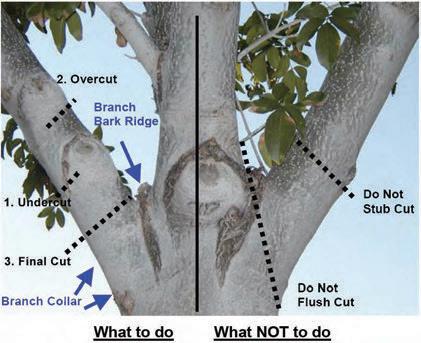
2 minute read
PREPARING FOR MONSOON SEASON
Kaipo Spenser, DLC Resources Field Manager
July and August find us squarely in monsoon season. While we welcome the summer rains, the vigorous storms present some challenges for plant material. Fortunately, DLC has many years of experience when it comes to navigating a variety of weather-related issues. From frost damage to extreme heat and blustery winds, your landscape is in capable hands.
When monsoon storms arrive, the emphasis shifts to clean-up and repair. Typically, summer storms occur late in the day after crews have left the property for the day. For immediate emergency aid, we have personnel on call 24 hours a day.
These workers are equipped to deal with the storm’s most pressing effects, such as trees blocking streets or sidewalks. Full-scale clean-up generally begins the following morning. Routine maintenance activities may need to be suspended or reduced in scope while the crew cleans up debris and performs repairs. If necessary, DLC will provide extra personnel to expedite the storm clean-up.
How To Ready Your Yard
Before monsoon season begins, prune trees to promote healthy growth and structure for your trees. Remove dead branches, crossed branches and thin the tree canopy, paying particular attention to Palo Verdes, Acacias and Mesquites that are especially prone to damage from high winds.
Always consider safety and training when beginning any project. It is a good idea to wear a long-sleeved shirt, long pants and closed-toe shoes when pruning.
Also, wear safety glasses, a hat and gloves to help prevent injuries. Unless you are a trained tree worker, only prune what you can reach from the ground; avoid using a ladder or climbing a tree to trim it. Consult a professional for additional work needed or if you are concerned about any hazards.
Once you’ve decided which trees need pruning, be sure to choose the proper tools. Limbs up to ½ inch in diameter can be pruned with hand pruners. Long-handled pruning loppers can handle limbs up to 1 inch in diameter, but a special pruning saw is needed for thicker limbs.
For those larger limbs, the three-cut method (as shown in the diagram) is an approach used to effectively trim and prevent bark from tearing down along the trunk. Remember, when trimming a tree, you never want to remove more than 25% of the green material. Don’t prune a newlyplanted tree during the first year, except to remove dead branches. Pruning a tree at this young age may impact its growth moving forward.
With your adult trees, it is essential for their health not to top the tree or trim it bare. DLC recommends that you never top trees. Topping is the indiscriminate cutting back of tree branches to stubs. This practice stresses and disfigures trees and creates hazardous, weakly-attached, new branches. It also makes an added maintenance expense as topped trees require more frequent pruning. It’s undoubtedly advantageous to prepare for monsoon season. DLC Resources knows how to handle the summer storms, and we will be ready when the high winds blow through the valley.

For additional information on proper pruning techniques and materials, please visit our website at www.dlcresources.com/learning-center.









